Are you looking for ways to make sure all students in your class feel affirmed, welcomed, and celebrated? Look no further. A culture-centered classroom is just that.
By using culture-centered teaching practices, students feel affirmed, welcomed, and celebrated for several reasons. First, teachers use the culture of the students inside and outside of the class as a vehicle through which instruction is given. Second, teachers structure rules, expectations, and disciplinary actions with the students’ cultural practices in mind. Third, students see themselves represented in the lessons taught, the books read, and the history studied.
Implementing these three components into the classroom makes it easier for the teacher to create the personalized learning environment students need to thrive.
Affirming Students through Culture-Centered Instruction
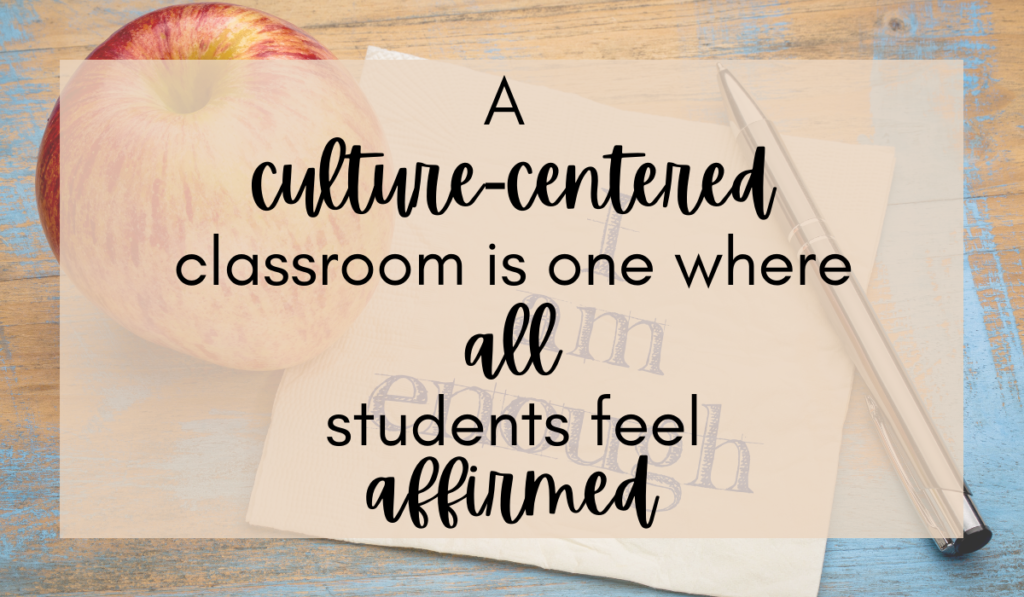 Ensuring that students feel emotionally supported and encouraged in the classroom is vital to academic achievement, social development, and personal growth and maturity.
Ensuring that students feel emotionally supported and encouraged in the classroom is vital to academic achievement, social development, and personal growth and maturity.
So, what does this look like?
- Validate students through the use of culture-centered curriculum resources that teach their history right alongside that of their peers. In this way students are given multiple perspectives of events and are able to critically analyze and discuss the significance of an event. For this reason, students can use a critical lens to determine their place in the larger scope of history moving forward.
- Encourage students by not only telling, but showing them that they can accomplish any goal. Show them examples of success traversing different career paths. Provide examples of success and achievement in a variety of areas with people that look, identify, and believe similarly.
- Support students by allowing them to show up as their full and authentic selves in classroom discussion. Provide all students multiple opportunities to critically engage in examining a variety of perspectives.
Welcoming Students through Culture-Centered Instruction
 When students are received into an inviting and genuinely approving classroom, they are able to trust that the classroom is a space where they can relax enough to learn and explore.
When students are received into an inviting and genuinely approving classroom, they are able to trust that the classroom is a space where they can relax enough to learn and explore.
So, what does this look like?
1. In a culture-centered classroom, the curriculum includes learning the history of, reading stories about, and exploring the contributions of a varied and diverse people. Sharing a balance of perspectives enables students to trust in, connect with, and see value in the curriculum. Students see that all people are welcome, because there is a priority on sharing a diversity of people’s stories in the classroom.
2. Inviting students into a classroom where they matter makes them feel welcome. How do students know they matter? They see themselves and their peers reflected in the lessons taught, the decor on the walls, and the disciplinary structure enforced. Students take greater interest in lessons that help them not just learn the curriculum, but more about themselves, their peers, and the world around them as they study. When they see diversity reflected in the decor and decorations there is a warmth and familiarity that lends to trust. Another key way to help students feel welcome is by disciplining them in a way that reflects an understanding of their customs, beliefs, and traditions. This shows care and concern for betterment, not just a desire to scold.
3. All students should proudly wear hairstyles, adorn clothing, and converse in a way that is natural and uplifting. Hair is a crown. Encouraging students to wear their hair in different styles is one key to creating a culture-centered classroom. Whether straight, curly, or in cornrows, students are confident in their ability to succeed academically. In addition, students should feel comfortable adorning traditional garbs. Students should feel free to wear a variety of brands and styles. Finally, students should be welcome to use their native tongue in class in addition to the majority language spoken. Helping students to understand the different contexts in which certain language patterns might be necessary is important, but should not be an expectation that limits the students’ ability to learn.
Celebrating Students through Culture-Centered Instruction
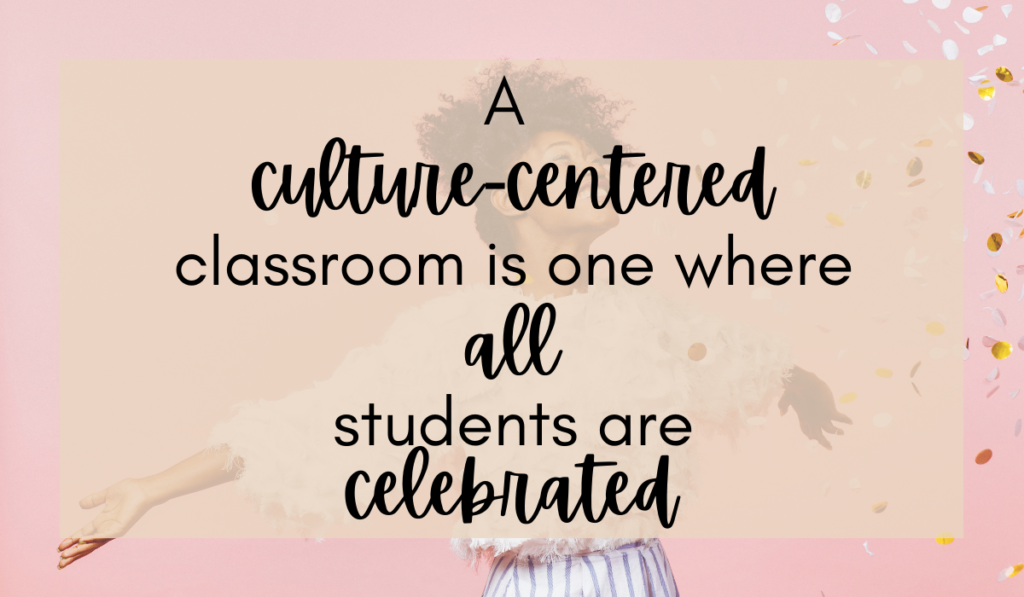 Creating a classroom culture of celebration is not just empowering for students, but it is enjoyable for teachers. Foster a love of celebrating the unique qualities, cultural practices, and beliefs of self and others.
Creating a classroom culture of celebration is not just empowering for students, but it is enjoyable for teachers. Foster a love of celebrating the unique qualities, cultural practices, and beliefs of self and others.
So, what does this look like?
- A culture-centered curriculum teaches about a diversity of people, beliefs, and traditions. More importantly teachers intentionally present beautiful and challenging truths. Many curriculums only present a dark, depressing story of certain people and places. It is important to make sure there is a balance of both victories and defeats shared about all people, places, and perspectives. Appreciation comes from knowing the entire story. In this way, students can truly celebrate their story and the story of others.
- Include both historical and current examples of people that represent excellence. Show this in the classroom curriculum, on posters, and in books. It ensures that students see success from many perspectives. Celebrate the journey. Honor success. Observe perspectives. Celebrate diversity. Help students identify gaps in areas of success by intentionally representing different people, places, and perspectives. Students can identify spaces to use their genius.
- Celebrate the diversity of ways in which students learn. Youth learners, like adult learners, prefer to learn in certain ways. Incorporating different different teaching methods, styles, and approaches ensures that student learning needs are placed as a priority. Ask students how they prefer to learn. Evaluate whether you are teaching in a way that best suits you or your students. Determine what it will take to adjust the approach.
Affirm, Welcome, Celebrate
A culture-centered classroom is one where students feel affirmed, welcomed, and celebrated through the instruction provided every day. Students also learn to affirm, welcome, and celebrate others. Everyone benefits from this classroom culture. Both academic and personal success is achieved.
Cheers!
Ready for more? Check out this blog post: 6 Ways to Create a Culturally Responsive Classroom
Take your students learning to the next level with these digital mini courses for teachers – CHECK THEM OUT HERE!

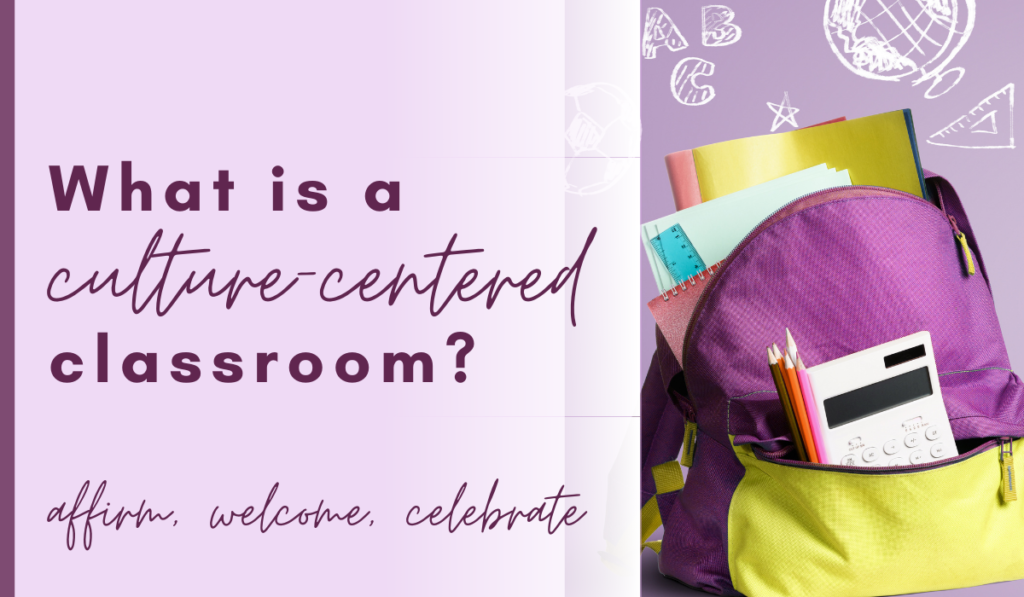


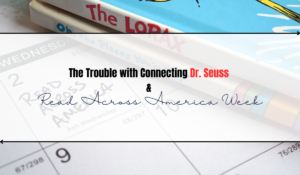
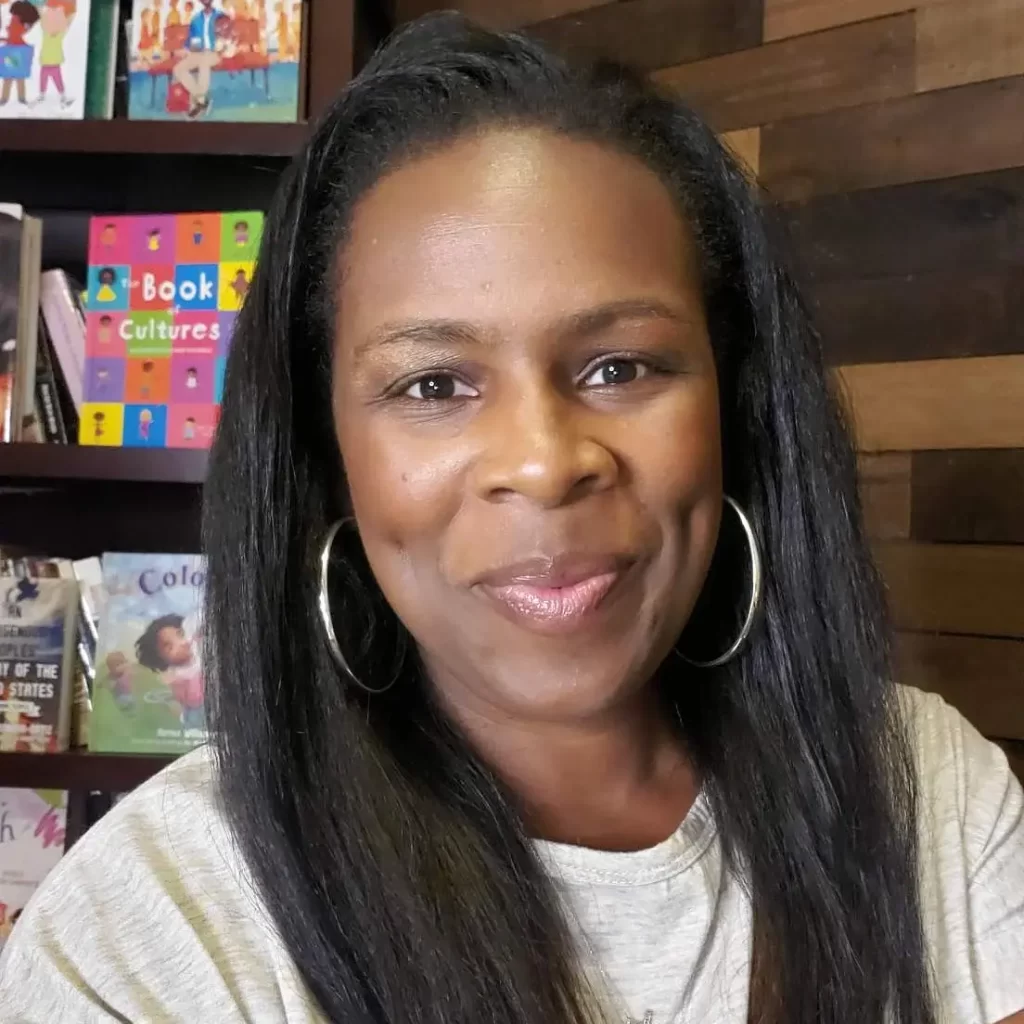
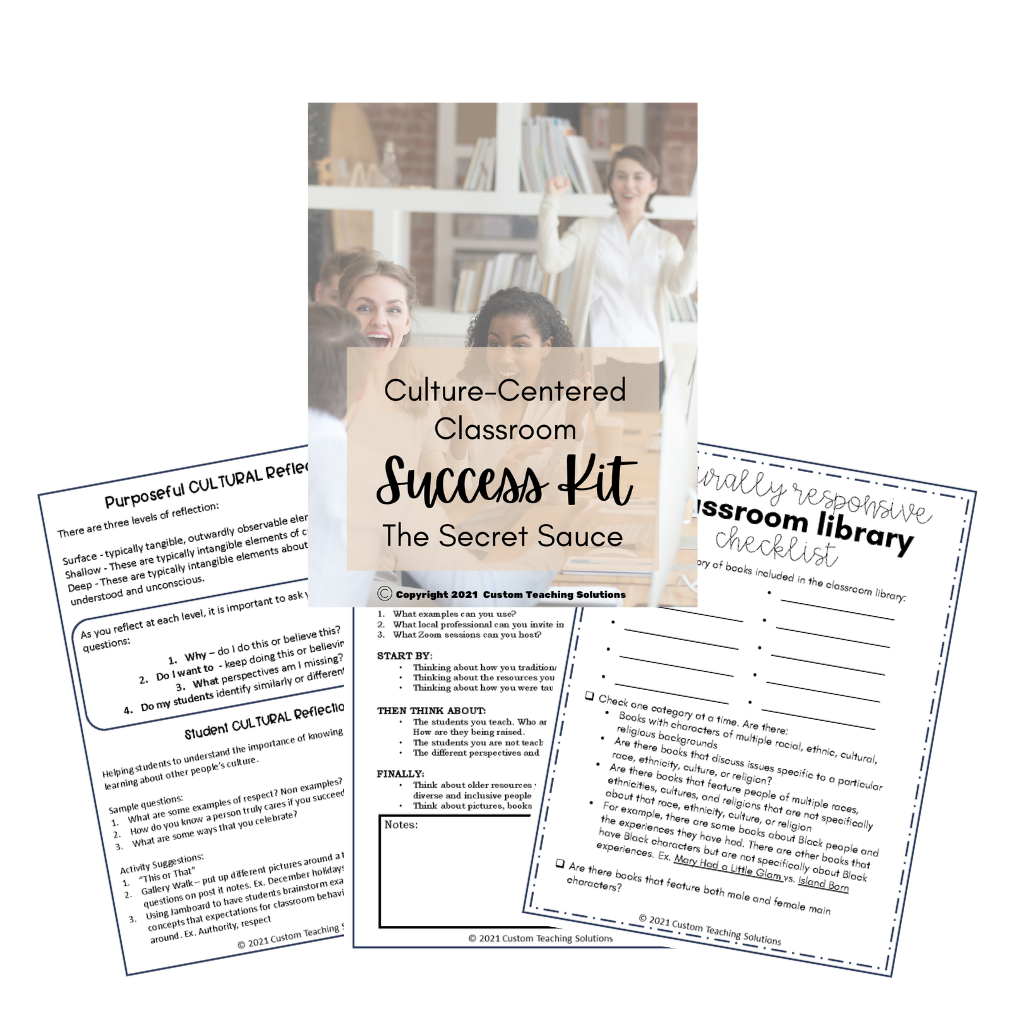
1 thought on “What is a Culture-Centered Classroom?”
Pingback: How to create a Culture-Centered Holiday Experience in the Classroom (Winter) - Custom Teaching Solutions